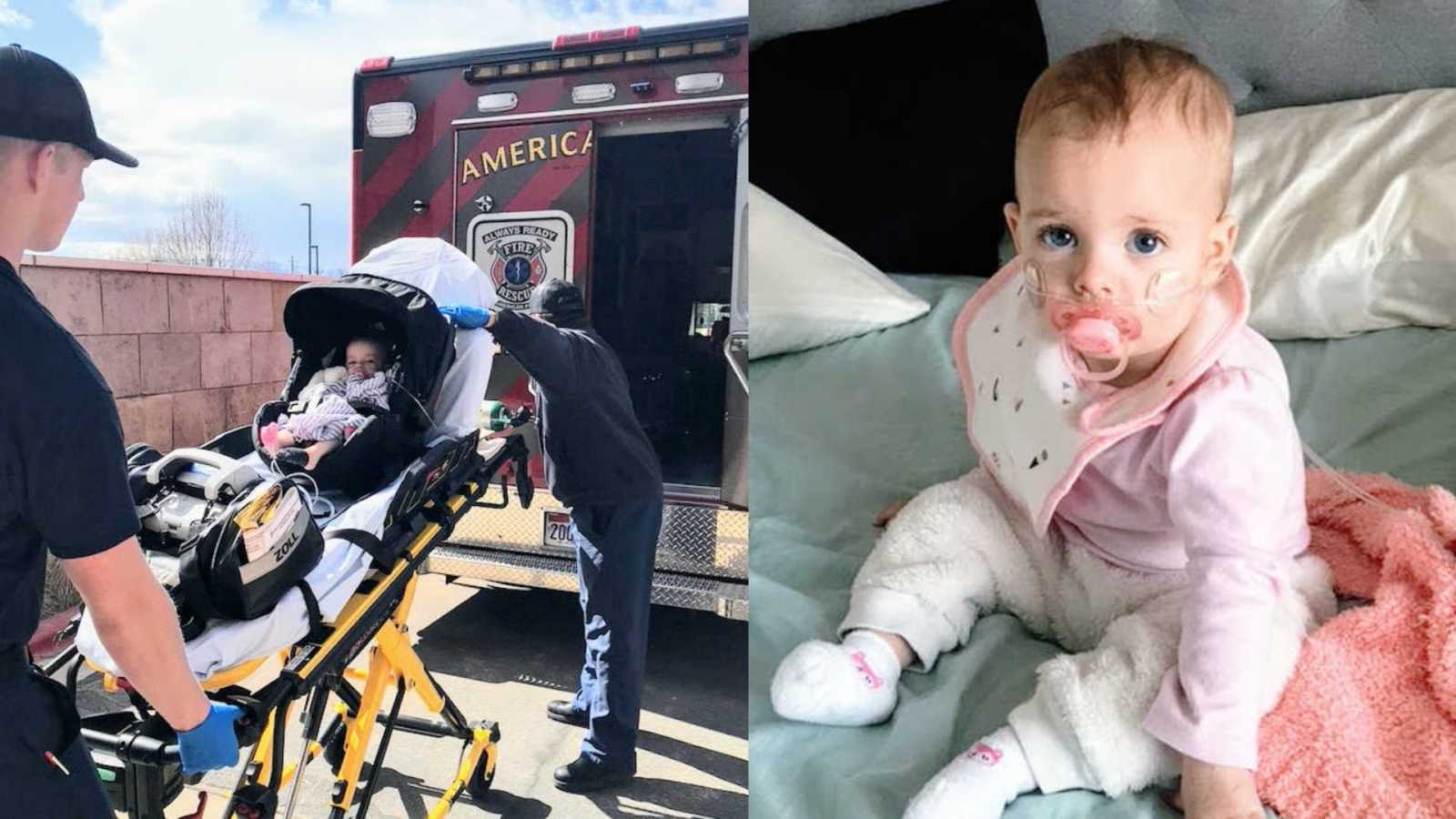“At the beginning of March 2020, my daughter became ill. My son found himself in urgent care. He came home from preschool and was really sick. It happened quickly and appeared to be respiratory. He has Asthma, so I took him to urgent care, whispering, ‘Please don’t be RSV. Please don’t be RSV.’ Respiratory Syncytial Virus can be deadly to infants. His tests quickly came back: he was positive for RSV. So, I started waiting.
By Sunday, my daughter, Elinor, was showing every sign of RSV, but worse. In my whole body, I felt we should start at urgent care, knowing we would end up in the Emergency Department. I brought my phone charger and her favorite stuffed animal.
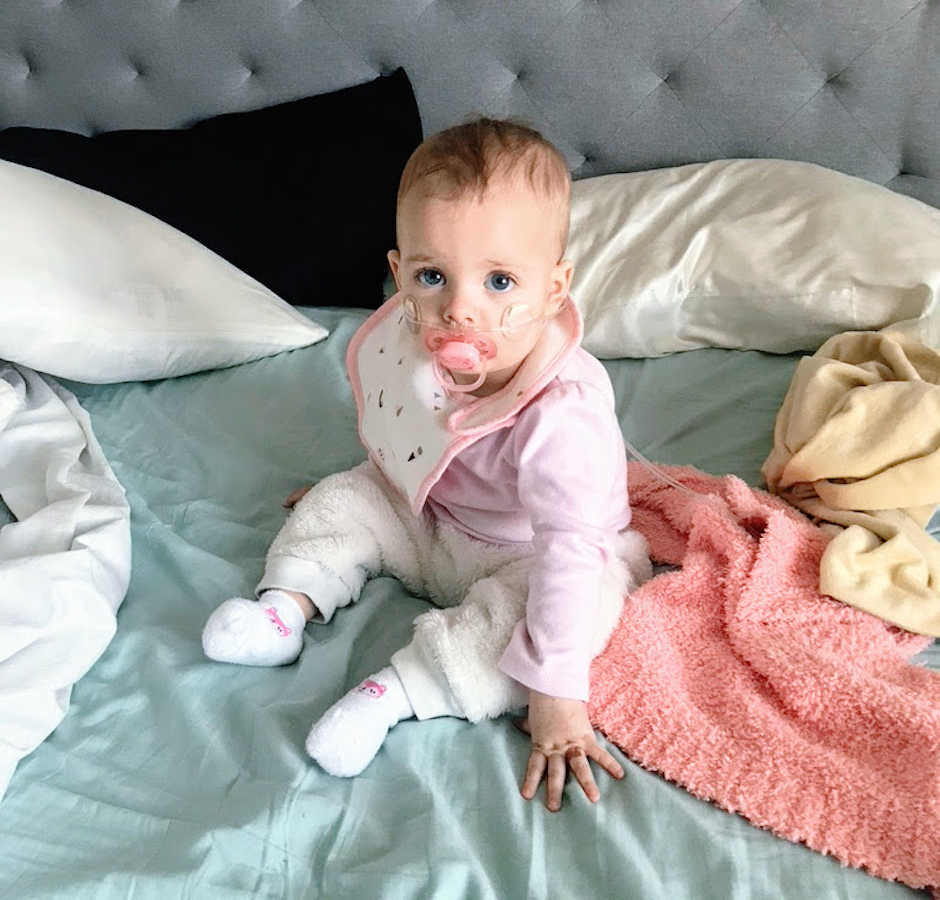
We made it to urgent care. She tested positive for RSV. They x-rayed her lungs: they were clear, but within ten minutes she was choking so hard on her body fluid that she started vomiting and turning purple. My nurses called for the doctor, desperately. A wheelchair magically appeared, and they told me to breathe into her face continuously. In between breaths, I sobbed, ‘Breathe, baby. Please. Please, breathe.’
From that point forward, we spent four long days bouncing between the Emergency Department and respiratory clinic (where they’d suction her nose and throat). They ultimately decided it was time to admit her when she became unresponsive and stopped eating. She just wasn’t getting better. I stopped sleeping out of fear for my daughter. My husband, Adam, assured me we would take this one step at a time. He held me and allowed me to cry for the first time in days.
The closest children’s hospital was twenty-five minutes away from the current hospital’s Emergency Department. The local fire department loaded my tiny infant onto a gurney with her IVs and oxygen. I rode with her, desperately working to create small talk with the fireman who monitored her vitals. The conversation felt forced and pulled out of me, like I was giving the last of my energy to a stranger. Yet, I knew if I stopped talking I would sob. I knew that entering this next hospital was going to mean an extended stay.
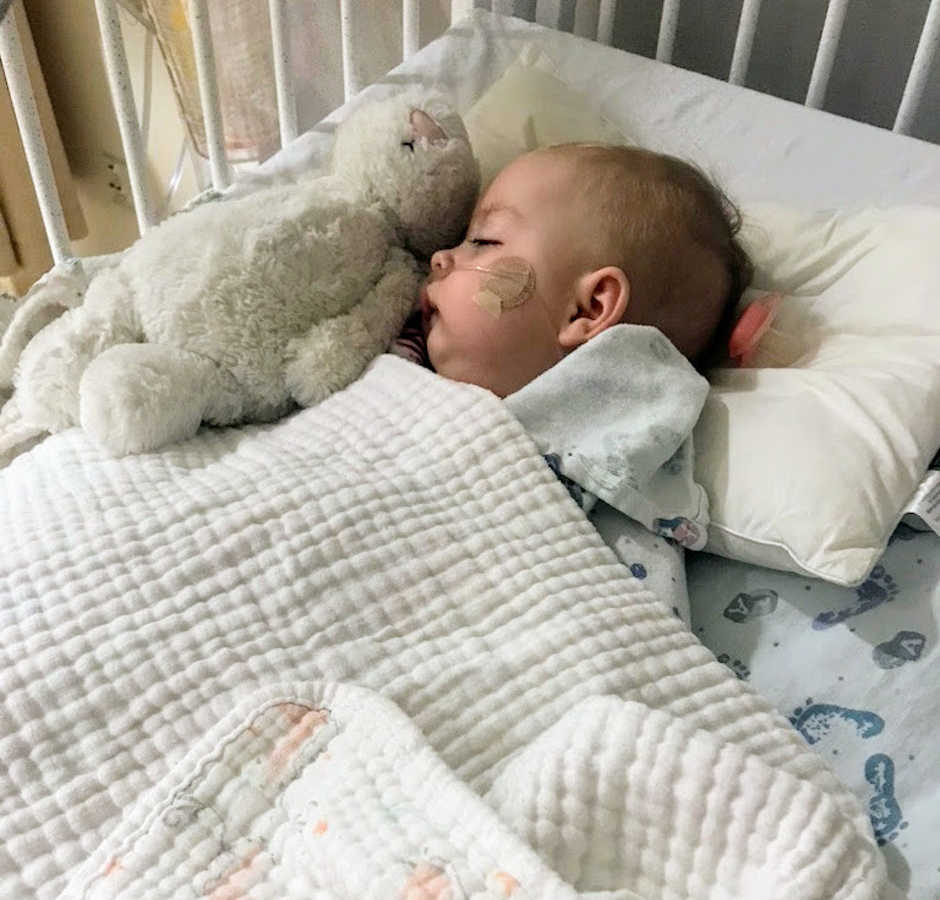
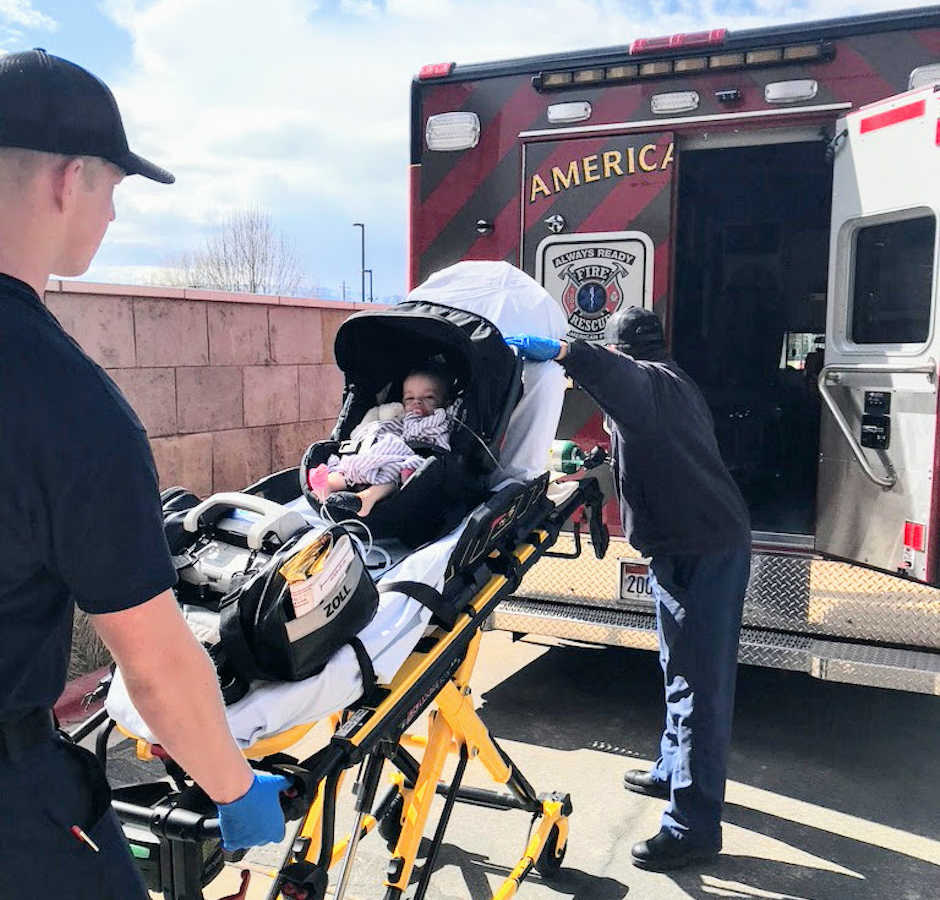
They were ready for us when we arrived. They did their presentation of the case. First, we called it RSV, because, after all, she was RSV positive. My husband arrived with my suitcase in hand. He looked tired, too. I’ll never forget how strong he was for all of us, but he was definitely tired.
For seven days, she was a medical mystery. Every morning, at 7 a.m. sharp, they ’rounded’ on us, presenting us with her case and their game plan. For many days, their plan included observation and tests. They ran many, many tests. The medical talk in and of itself was overwhelming; I learned all kinds of new terms, including MRIs, CTs, spinal taps, EEGs, and echocardiograms. I watched the doctors, techs, and nurses try to figure out why she was unresponsive and had a racing heartbeat and fever.
Now, I should mention, this was at the very beginning of the Coronavirus Pandemic. We questioned and pressed, but she never received a test. However, each doctor and nurse took precautions. No one entered our room without a gown, mask, cap, gloves, and goggles. It made our room feel even more cold and sterile, without hope.
The fear was that she had something called Kawasaki’s Disease—a disease that has no test. However, if a patient does have Kawasaki Disease (an autoimmune disease where the heart and vessels swell), and it goes untreated for ten days, ultimately, the heart stops. RSV can trigger Kawasaki Disease, and we were on Day 7. She didn’t present with all of the typical symptoms: external swelling, rash, high fever, and peeling skin. All she had was a fever and an abnormally racing heart.
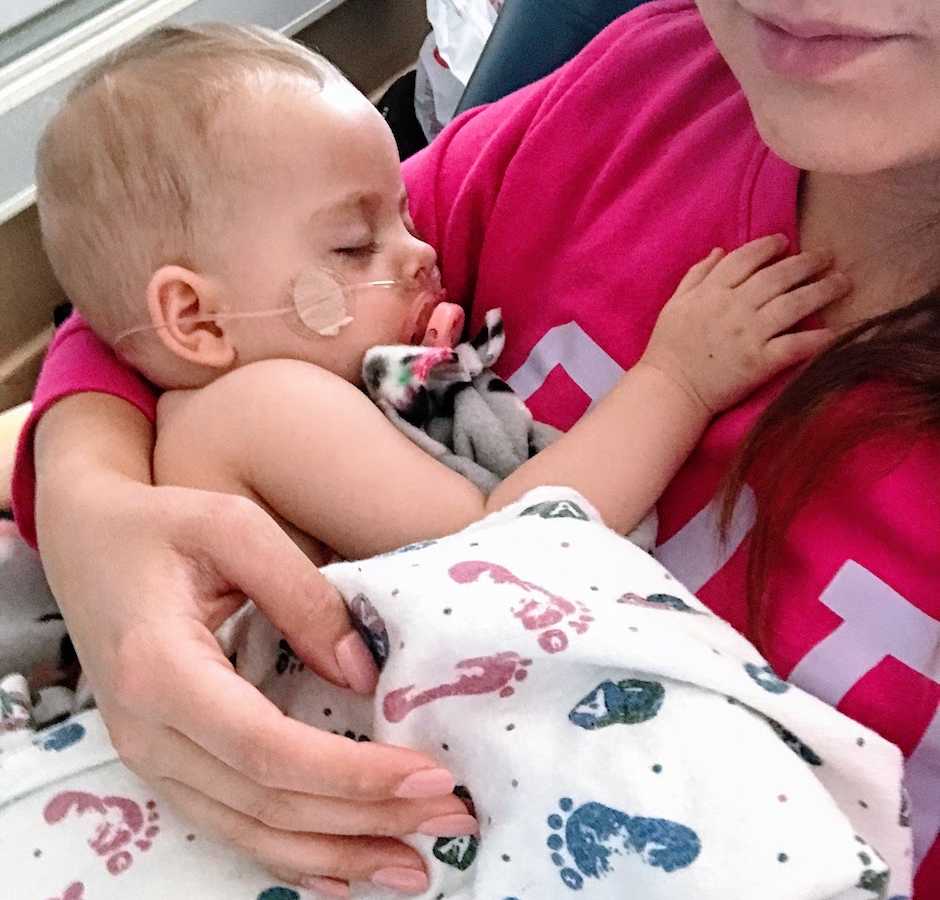
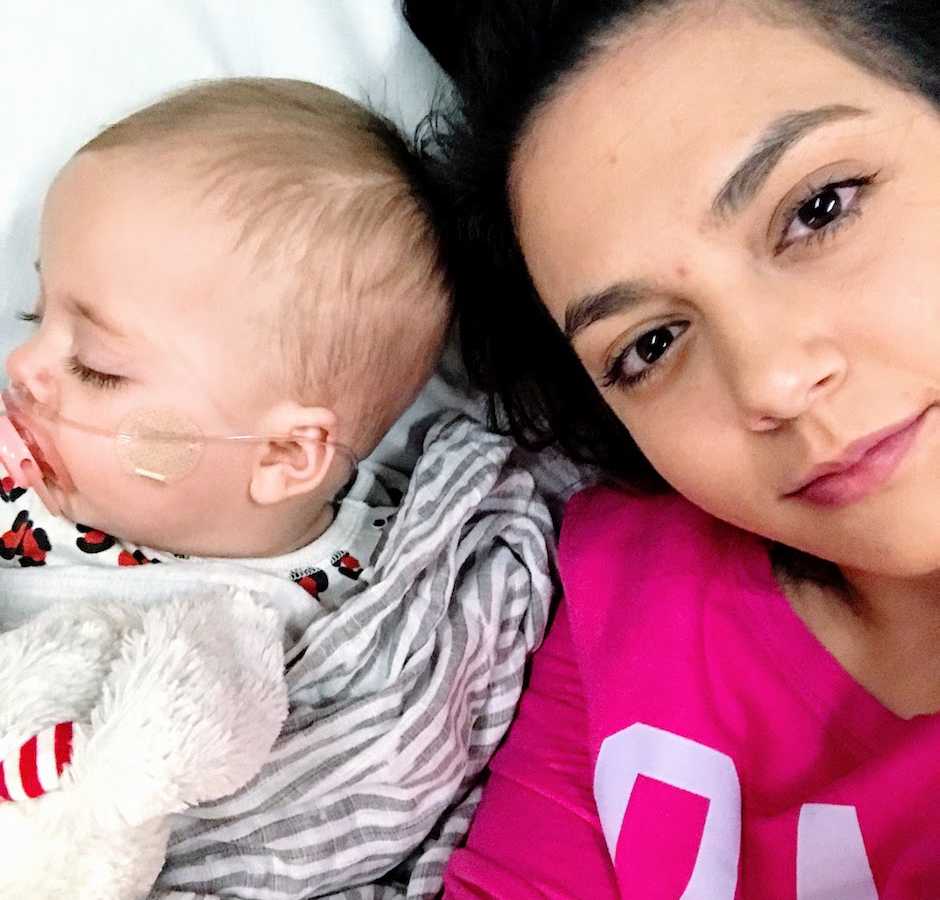
To this day, we never received a definitive diagnosis. We called it Kawasaki’s Disease, even though she never presented with the typical symptoms. We needed to treat her quickly after seven days to prevent lasting damage or death. That fact alone made me feel panicked. I’ve never felt such worry in my life. I needed a break after seven days of being in that hospital. I went to my car and just sobbed. I believe in God, so I prayed, but instead of a typical prayer, all I could voice was, ‘Oh, God. Please. Please. Oh, God. Please.’ I half-screamed, half-sobbed. The morbid thought hanging in my mind kept making itself known: ‘Would my son lose his sister?’
They decided to run one last test to make sure she didn’t have cancer. Scary, I know. The nurse talked to me about what protocol looks like for that, but told me not to go there until we knew what was happening. I tried to push it to the back of my mind. They had her in a full-body scan for three hours. I did laps around the exterior of the hospital. It was cold and rainy, but it made me feel something other than worry, so I continued walking. When I knew she’d be back in our room within an hour, I went back into the hospital, fortitude renewed. The scan showed nothing.
We proceeded with the plan to treat it as Kawasaki Disease. Being Day 7, my little girl received her first round of IVIG (intravenous immunoglobulin — made from plasma). She started to get better. She opened her eyes and played with a toy. She ate a McDonald’s french fry. She drank a sip of juice and went back to sleep.
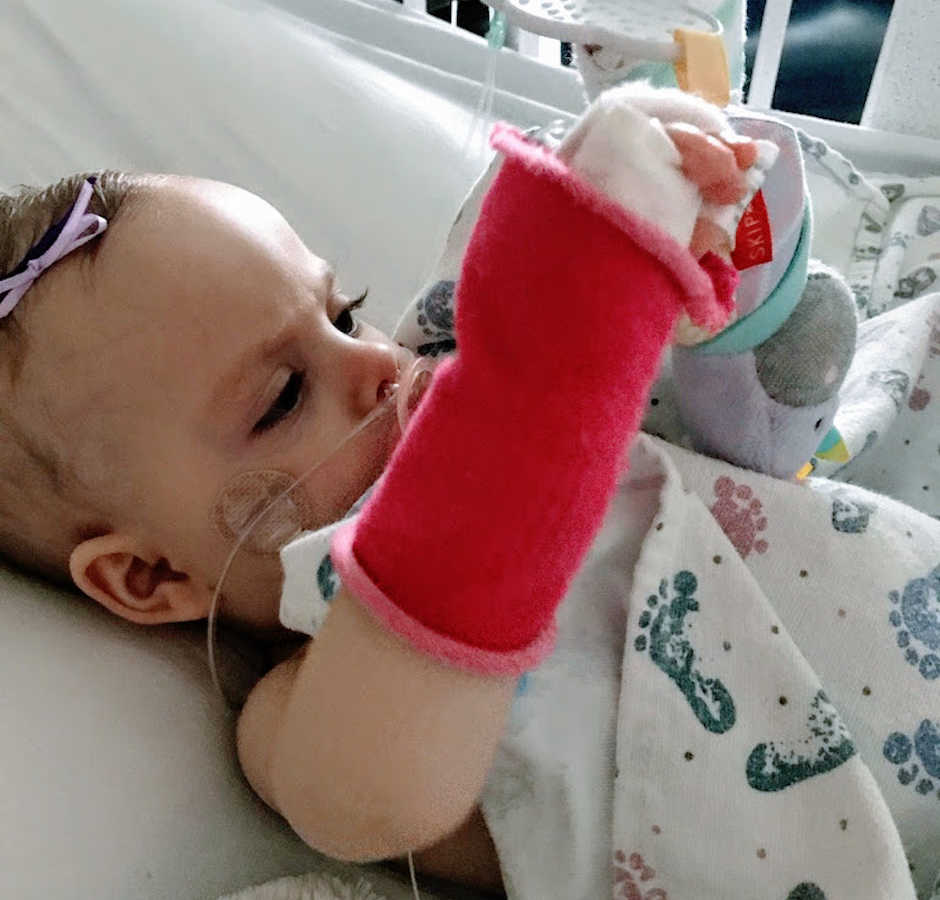
For the first time in over a week, I felt hope, like I could breathe. As she slept, I felt myself inhaling and exhaling deeply — the kind of breath you create when you’re trying to focus. I didn’t know the cause of her illness, but something was finally making her better. I didn’t care about the title. She was getting better. We spent four more days in the hospital after that, but they were days of healing. She began to eat again and only spiked one more fever, which prompted a second IVIG dose. She was healing. We could see it. We were going to be whole and okay.
Each day I write out what I’m grateful for. I remind myself that my daily struggles are minimal compared to what I’ve faced. We’ve done harder things. Those two weeks held some of the most excruciating moments of my life. I don’t wish what I experienced on any mother, but what I did gain is a newfound sense of gratitude for my daily struggles and all of our lives. Those days were the worst, but you only experience the worst day (or days) of your life once. We must endure. We must not give up. We must hope.”

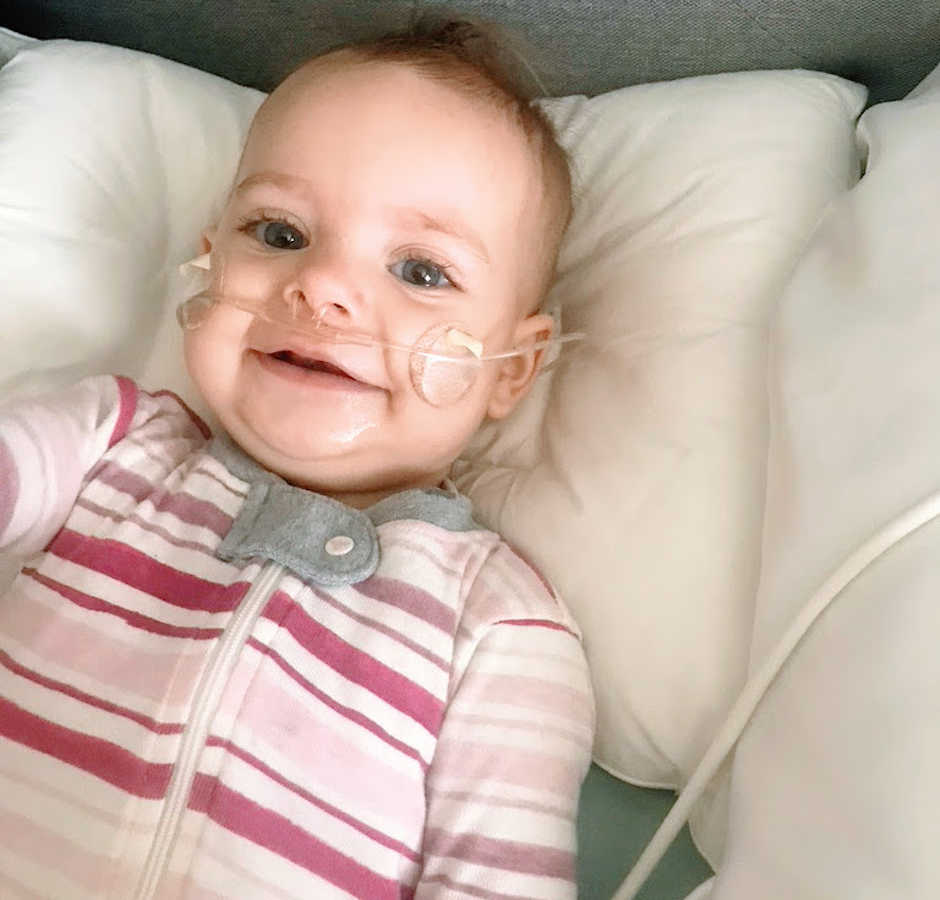

This story was submitted to Love What Matters by Evi Hayhurst Figgat of Utah County, Utah. You can follow her journey on Instagram and Facebook. Submit your own story here and be sure to subscribe to our free email newsletter for our best stories, and YouTube for our best videos.
Read more stories like this:
Do you know someone who could use a little hope? SHARE this story on Facebook with family and friends.

